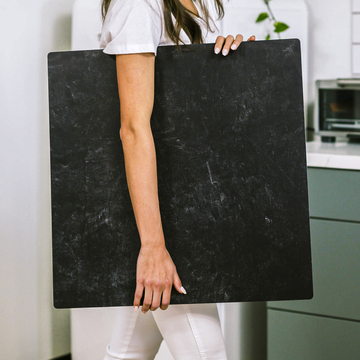When it comes to product photography, a vinyl backdrop can seem like a simple accessory. Most people focus on its durability or just how easy it is to wipe clean. But did you know that there’s a world of unseen science shaping how your products look on camera?
If you’re a creator or small business owner determined to elevate your photography, understanding what’s really happening beneath the surface will give you an instant edge. Let’s pull back the curtain on the material secrets of vinyl backdrops and how they impact every shot you take.
The Texture Factor: Not All Vinyl Is Created Equal
Walk into any craft store and you’ll spot low-cost vinyl backdrops that feel completely smooth - almost like a tablecloth. At first glance, you might assume smoothness is good. But under your studio lights, it’s a different story.
Super-smooth vinyl acts just like a mirror, throwing back harsh ‘hot spots’ whenever light hits it at an angle. Forget flawless-this can make editing a nightmare, especially for flatlays or high-gloss items.
Here’s where quality shows:
- Premium vinyl backdrops are designed with a subtle, random texture.
- This texture scatters light, minimizing distracting glares and helping your scene look believable.
- Advanced surfaces mimic the look and feel of real materials, from weathered wood to natural stone.
The Reality of Reflections: How Vinyl Bends Light
Ever reached for a polarizing filter hoping to remove pesky reflections? The way your vinyl handles polarized light is a hidden indicator of quality. Glossy, inexpensive vinyl throws back intense, artificial reflections, while engineered, matte vinyl disperses and softens the highlights for a finish that looks “real” to the eye.
In practice:
- Smooth vinyl + direct light = sharp, ugly glare
- Premium textured vinyl + any lighting = soft, natural-looking shine
Your backdrop can either fight you-or flatter your work, simply by how it shapes light.
Color Depth: The Art of Subsurface Scattering
Want to make close-up product shots look even more irresistible? The secret might be just under the surface. Some expert-level vinyl backdrops feature a thin, translucent layer that allows light to softly penetrate and bounce around, just like real marble or hand-painted wood. This process, called subsurface scattering, gives your images surprising depth and authenticity-especially in detail-rich or macro work.
No More Curling: Engineering Vinyl for Real Life
Anyone who’s unrolled a cheap vinyl sheet knows the frustration: those stubborn corners that never lie flat. That’s because basic vinyl has a “memory” from being rolled up, making it a hassle to work with.
High-end backdrops solve this with smart construction:
- Multi-layer materials sandwich a rigid core, so the surface forgets its curls and stays flat.
- This design means you spend less time battling the backdrop and more time shooting gorgeous images.
What to Look for in a Vinyl Backdrop
So what sets a professional vinyl surface apart? Skip the guesswork and check for these features:
- Randomized surface texture for natural-looking scatter and minimal glare.
- Soft, controlled shine that doesn’t overpower your subject.
- Subsurface glow in premium options for advanced realism in close-up photos.
- Engineered rigidity for hassle-free, flat setups every time.
Remember, your backdrop is more than just scenery-it’s an invisible partner that shapes how your brand is seen. By picking one designed with the science of light in mind, you’ll capture cleaner, crisper, and more compelling product images in every single shoot.
Curious about other hidden influences that make or break a shot? Let us know what you want to explore next!


